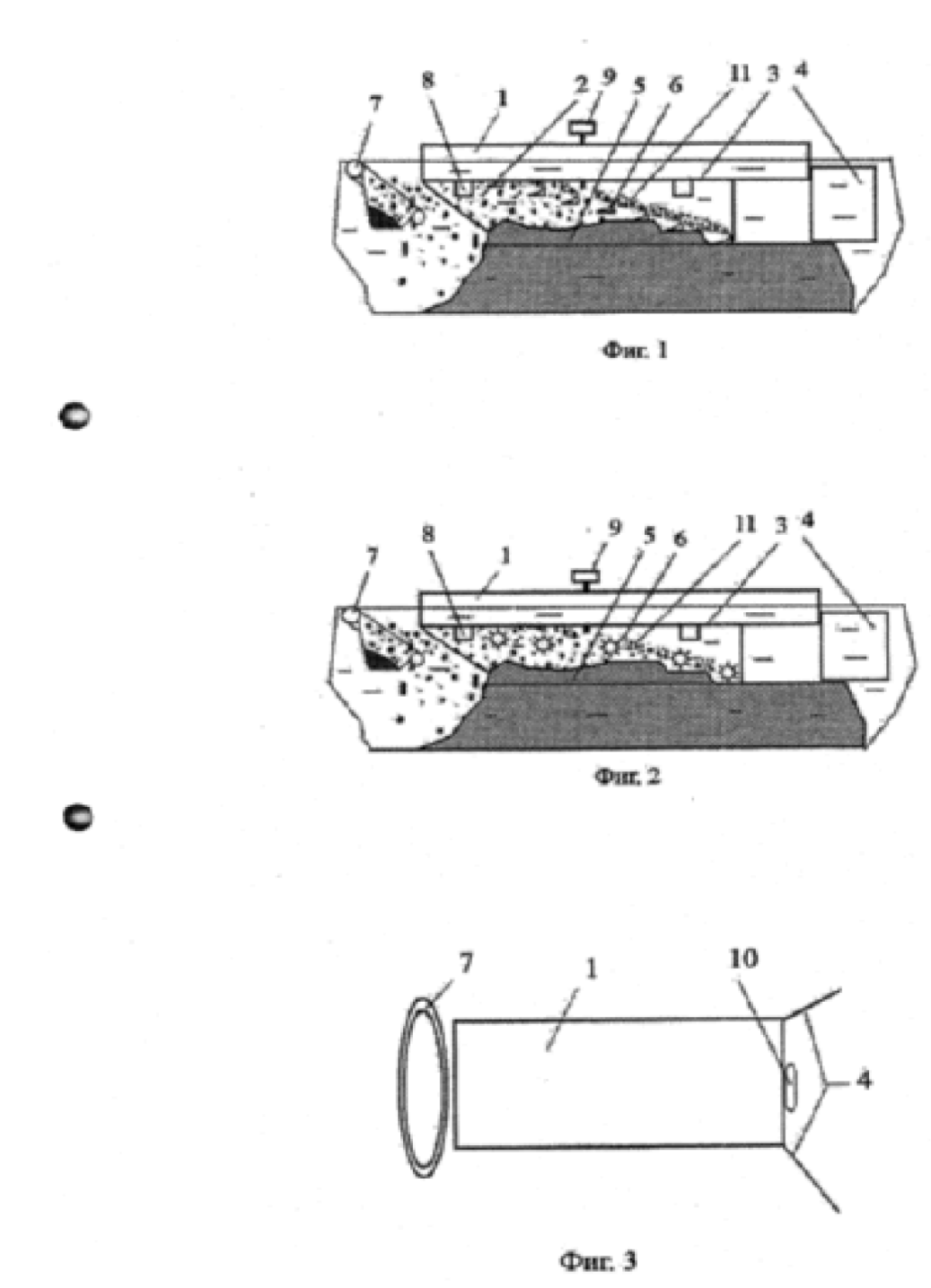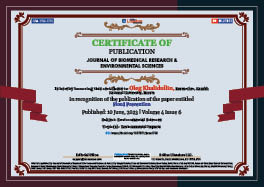Environmental Sciences . 2023 June 10;4(6):999-1001. doi: 10.37871/jbres1760.
Flood Prevention
Oleg Khalidullin*
The leadership of many countries is blocking roads, bringing in thousands of bags of sand and clay, raising banks, dike houses, pumping water out of cellars, residents are evacuated. Flood control and its consequences are planned in advance. Enormous funds are spent on this. Every year.
The waters of the rivers overflow their banks, destroy roads, bridges, structures, take lives. And in the summer… there is not enough water.
Most likely this happens because the depth of the rivers has decreased, the water does not fit into the shallow channel and overflows the banks. To the natural materials of the eroded shores, the clogging of its bottom with human waste, garbage washed away by last year's floods and current rains is added.
In order to prevent floods, it is necessary to prepare river beds for increased volumes annually - just remove sediment. For lowland rivers, deepening should be carried out over long distances.
Existing dredging technology has grown into such an industry that no coastal economy can buy or rent a floating monster of hundreds of tons of metals, materials, devouring an entire river of fuel.
In contrast to such dredgers and dredges, devices based on the use of the forces of the movement of water itself have been proposed. Device designs are hundreds of times smaller in volume, metal consumption and almost do not consume external energy.
Self-made micromodels on small rivers have shown the operability of such an impact on the bottom of the rivers.
The proposed device moves slowly along the bottom of the river, and washes away bottom sediments. The hardened part of the bottom sediments is destroyed by the mechanical action of additional devices placed on the device. The concentration and direction of movement of water flows is provided by adjustable dampers. The device constructively uses the flow of the river, and does not require energy to move the silt and its own movement. Low productivity with a continuous round-the-clock cycle will be able to pass the entire river in spring, summer and autumn before flowing into a lake or sea.
The technological process is carried out by directing part of the flow to pre-selected places in the channel. Erosion and alluvium zones are created - sedimentation of bottom sediments, which develop and move in given sizes and directions. The device must stand firmly on the bottom and control the flow of water. It can be equipped with a variety of mechanisms to change the buoyancy and windage for movement with the flow. More functional and productive devices equipped with lead screws driven by their own power plant. This is necessary for free movement under water and on the surface of the water, for example, to return to its original state for a secondary passage.
In addition to dredging, it becomes possible to search for and retrieve sunken objects, use any underwater equipment - pumps and openers, cranes and other mechanisms for cutting surface and sunk tree trunks, washing and sorting bottom sediments, for example, for gold mining without lifting waste rock to the surface .
The individual elements of the micromodels of the proposed device have been tested on small rivers, but this is not enough for full-scale research and the creation of a new technology. Design work and testing are required.
Types of devices are developed for each type of water body. From small to great rivers such as the Nile, Ural, Mississippi, Yangtze and Amazon.
The proposed devices can save water from spreading and fumes, narrow deltas, restore shipping. Created inventions;
- Khalidullin OH, Eurasian patent: № 18312 of July 30, 2013
- Khalidullin OH, Salnikov VG, Duskaev KK. The method of sediment cleaning and deepening of river beds and the device for its implementation: US Patent No. 87062.
- Khalidullin OH. The way to prevent flooding and water flow management in the flood period and the device for its implementation № 26962 of May 15, 2013.
- Vladimir GS, Khalidullin OH, Almaty KZ, Method and device for deepening riverbeds and their cleaning from sediments. US 9,650,751 B2.
- Khalidullin OH, Nurushev MZ, Kerimbai BZ, Kadyrov ZN. Patent RK 32640. 2016.
Designing and testing are required to test and demonstrate the effectiveness of the new method in full river conditions. The first experience on a natural object can start a widespread deepening of the rifts on all rivers, where floods occur and warn them in the next high water. It is interesting that the development of the idea of self-cleaning the river l ed to a revolutionary direction in the development of new technologies underwater. Opens a new era of hydraulic engineering. This device is mobile moving for work under water.
Device for Underwater Hydrotechnical Works. Methods and devices have been developed that use the forces of river water movement to form a channel within specified limits, with specified depths, to restore navigation on abandoned rivers. The manufacture and operation of such facilities is available to small coastal farms that suffer from floods, bank collapse, and shallowing of fairways (Figure 1).
The recognized patent purity of the technical solution, the logical sequence of known essential features that are necessary, and all taken together, are sufficient for this object to be operational. To test and show the effectiveness of the new method in natural conditions, full-scale development tests of the proposed device on various rivers are required.
The first experience at a natural site will show its effectiveness and a widespread deepening of riffles can begin on all rivers where floods occur and prevent them in the near future. The designs of such devices are developed for each type of water body. From small rivers to great rivers such as the Irtysh, Ural, Mississippi and Amazon.
In delta regions, when the river flows into lakes and the sea, such a device is especially necessary because the gradual sedimentation of sediments raises their bottom, leads to the death of navigation, flooding and swamping of new lands, water is spent on sand impregnation and evaporation. All this eventually leads to the fact that the lakes dry up, for example, the Aral Sea, at the approach of Balkhash.
The proposed devices allow you to save water from evaporation, if you remove the shallows in the main, historical channel, narrow the delta, then it will be possible to restore navigation in abandoned areas. To save water in the summer, it is customary to build reservoirs based on dams and dams. Practice shows that abnormal precipitation leads to the breakthrough of such dams and floods. The reasons leading to this are also the long-term sedimentation of the reservoir itself by sediments from rivers. Periodically, it is necessary to clean the bowl of the reservoir from deposits. The proposed principle of cleaning the riverbed by the proposed method can be applied here as well. The lead screw design can be used to create water flow in slow flowing rivers and even stagnant water bodies.
There is a continuing development of this principle, which is even cheaper to manufacture and easier to manage compared to the shown patent solutions. You can lower such a device to the bottom, and simple automation will be able to independently guide it along the bottom of the river, deepening it by 20-30 centimeters along the entire length of the river. 2-10 such devices for the whole summer will be able to deepen the bottom of the river by several meters.
The last device is made in the form of know-how. It is offered to an enterprise that can test and become the owner of a new technology.
Content Alerts
SignUp to our
Content alerts.
 This work is licensed under a Creative Commons Attribution 4.0 International License.
This work is licensed under a Creative Commons Attribution 4.0 International License.









